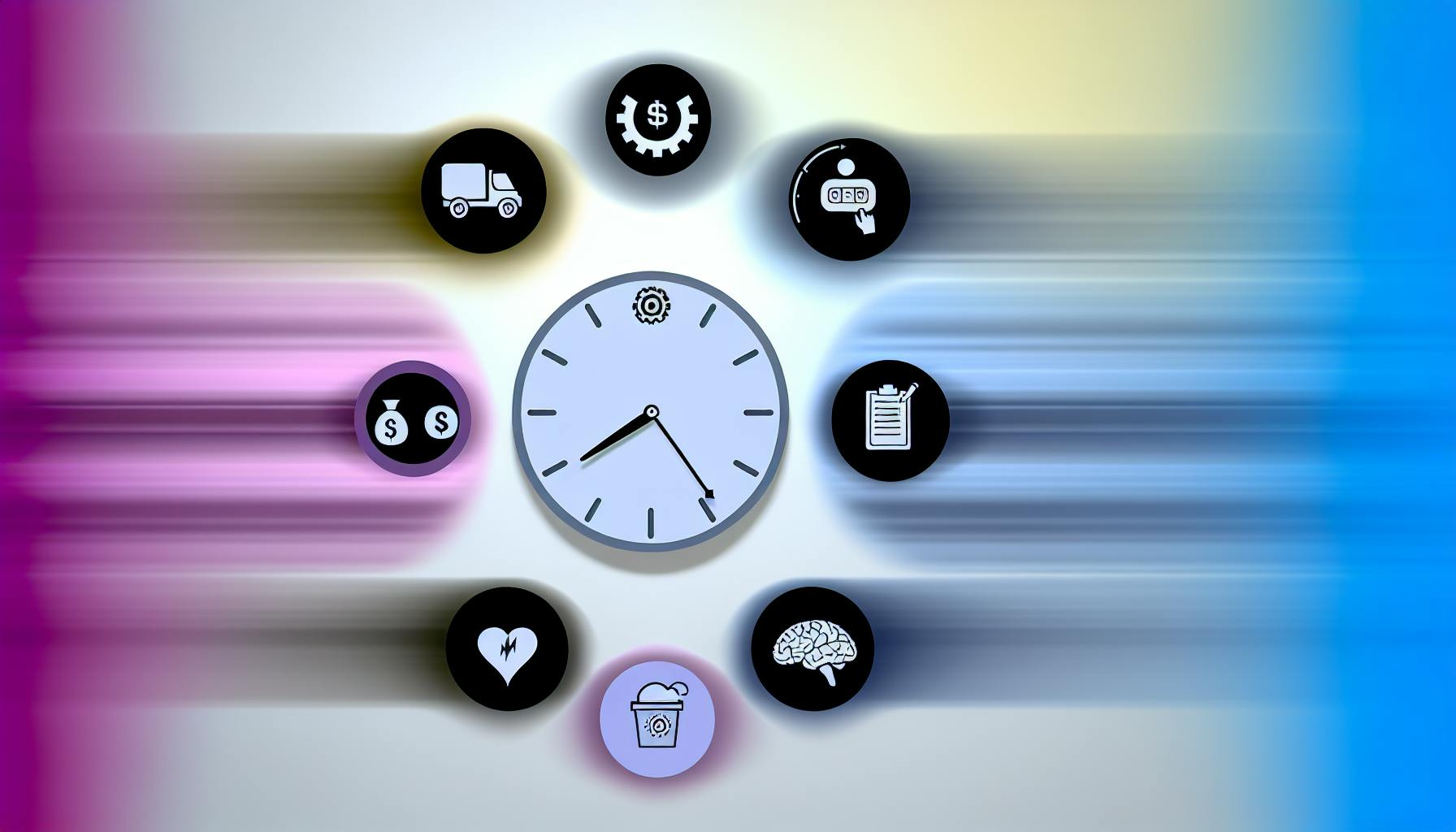Usage-based billing is a pricing model where customers pay based on their actual usage of a product or service. This guide covers:
-
What is Usage-Based Billing? Different models like per-unit, overage-based, volume-based, and tiered usage billing, along with their benefits for customers and businesses.
-
Evaluating Your Business Needs: Analyzing your current model, weighing pros and cons to determine if usage-based billing aligns with your products/services.
-
Choosing a Billing Platform: Key features to look for and a comparison of popular billing solutions supporting usage-based billing:
| Solution | Scalability | Integration | Flexibility | Real-time Tracking | Security & Compliance |
|---|---|---|---|---|---|
| Stripe | ✅ | ✅ | ✅ | ✅ | ✅ |
| Chargebee | ✅ | ✅ | ✅ | ✅ | ✅ |
| OneBill | ✅ | ✅ | ✅ | ✅ | ✅ |
| Billwerk+ | ✅ | ✅ | ✅ | ✅ | ✅ |
-
Setting Up Metering and Pricing: Configuring meters to track usage data, setting up pricing models like tiered, volume, or pay-as-you-go, and integrating real-time usage tracking.
-
Integrating Billing with Your Software: Connecting billing with existing apps, maintaining data accuracy and security.
-
Testing and Launching: Performing system tests, preparing for go-live, and managing your billing system post-implementation.
This comprehensive guide covers everything you need to know about implementing a usage-based billing model for your business.
Evaluating Your Business Needs
When considering a usage-based billing model, it's essential to evaluate your business needs and determine if this pricing strategy aligns with your services or products.
Analyzing Your Current Business Model
Before implementing a usage-based billing system, take a closer look at your current business model. Analyze your customer usage patterns, revenue streams, and cost structures. Ask yourself:
- What drives customer engagement and revenue growth?
- How do customers interact with your product or service?
- What are the primary cost components associated with delivering your product or service?
Understanding your current business model will help you identify areas where a usage-based billing model can optimize revenue, reduce costs, and improve customer satisfaction.
Weighing the Pros and Cons of Usage-Based Billing
When evaluating a usage-based billing model, consider the advantages and disadvantages.
| Pros | Description |
|---|---|
| Aligns revenue with actual usage | Provides a more accurate reflection of customer value |
| Encourages efficient usage | Leads to cost savings and increased efficiency |
| Competitive advantage | Offers a flexible and transparent pricing model |
| Cons | Description |
|---|---|
| Complex implementation | Requires significant investments in technology and resources |
| Revenue volatility | May lead to unpredictable revenue streams |
| Transparency and trust | Requires a high degree of transparency and trust with customers |
By carefully evaluating the pros and cons of usage-based billing, you can make an informed decision about whether this pricing strategy is right for your business.
Choosing a Billing Platform
When implementing usage-based billing, selecting the right billing platform is crucial. This platform will track and manage customer usage, generate invoices, and process payments. With many options available, it's essential to evaluate your needs and choose a platform that aligns with your business goals.
Key Features for Effective Billing
When selecting a billing platform, consider the following key features:
| Feature | Description |
|---|---|
| Scalability | Handles a large volume of customers and transactions without performance issues |
| Integration | Integrates with existing business systems, such as CRM, ERP, and payment gateways |
| Flexibility | Accommodates different pricing models, including tiered pricing, flat fees, and usage-based pricing |
| Real-time Tracking | Tracks customer usage in real-time, providing accurate billing information |
| Security and Compliance | Ensures customer data security and complies with relevant regulations |
Billing Solutions Comparison
Here is a comparison of popular billing solutions that support usage-based billing:
| Billing Solution | Scalability | Integration | Flexibility | Real-time Tracking | Security and Compliance |
|---|---|---|---|---|---|
| Stripe | ✅ | ✅ | ✅ | ✅ | ✅ |
| Chargebee | ✅ | ✅ | ✅ | ✅ | ✅ |
| OneBill | ✅ | ✅ | ✅ | ✅ | ✅ |
| Billwerk+ | ✅ | ✅ | ✅ | ✅ | ✅ |
When evaluating billing solutions, consider your specific business needs and requirements. Look for solutions that offer a free trial or demo, and read reviews from other customers to get a sense of their experience with the platform.
By choosing the right billing platform, you can ensure a smooth and successful implementation of usage-based billing, and provide a better experience for your customers.
Setting Up Metering and Pricing
Configuring Meters and Pricing Models
To set up metering and pricing, you need to configure meters that track usage data and set up a pricing model that matches your business's billing strategy. A meter is a unit of measurement that tracks customer usage, such as the number of API calls, gigabytes of storage, or minutes of video streaming.
Meter Configuration
When configuring meters, consider the following:
| Meter Type | Description |
|---|---|
| Counter | Tracks the total amount of usage |
| Gauge | Tracks the current level of usage |
| Delta | Tracks the change in usage over time |
Pricing Models
Once you have configured your meters, you need to set up a pricing model that defines how much customers will be charged based on their usage. Common pricing models include:
| Pricing Model | Description |
|---|---|
| Tiered Pricing | Customers are charged a fixed rate for a specific range of usage |
| Volume Pricing | Customers are charged a discounted rate for large volumes of usage |
| Pay-as-you-go Pricing | Customers are charged a fixed rate for each unit of usage |
Integrating Real-Time Usage Tracking
To accurately track customer usage and adjust pricing in real-time, you need to integrate your metering system with your billing platform. This integration enables you to:
- Track usage in real-time: Monitor customer usage as it happens, allowing for accurate billing and pricing adjustments.
- Adjust pricing dynamically: Update pricing in real-time based on changing usage patterns or customer behavior.
- Provide transparent billing: Give customers a clear understanding of their usage and costs, reducing billing disputes and improving customer satisfaction.
Integration Considerations
When integrating real-time usage tracking, consider the following:
| Integration Point | Description |
|---|---|
| API Integration | Use APIs to integrate your metering system with your billing platform |
| Data Processing | Ensure that your system can process large volumes of usage data in real-time |
| Scalability | Design your system to scale with your business, handling increasing volumes of usage data and customer growth |
By configuring meters and pricing models, and integrating real-time usage tracking, you can create a robust and accurate billing system that meets the needs of your business and customers.
Integrating Billing with Your Software
Integrating your billing system with your software stack is a critical step in implementing usage-based billing. This integration enables you to accurately track customer usage, automate billing processes, and maintain a seamless customer experience.
Connecting Billing and Business Apps
To integrate your billing system with your software stack, you need to connect your billing platform with existing applications. This connection enables the seamless capture of usage data and billing information.
| Integration Method | Description |
|---|---|
| API Integration | Use APIs to integrate your billing platform with your software stack |
| Webhooks | Use webhooks to receive real-time notifications of usage data and billing events |
| Data Import/Export | Import usage data from your software stack and export billing information to your CRM or ERP system |
When integrating your billing system with your software stack, consider the following best practices:
- Use standardized APIs: Utilize standardized APIs to simplify integration and reduce development time.
- Implement data validation: Validate usage data and billing information to ensure accuracy and prevent errors.
- Monitor integration performance: Monitor integration performance to identify and resolve issues quickly.
Maintaining Data Accuracy and Security
Maintaining accurate data and implementing security measures are crucial when integrating your billing system with your software stack. Accurate data ensures that customers are billed correctly, while security measures protect sensitive billing information from unauthorized access.
To maintain data accuracy and security, consider the following best practices:
| Best Practice | Description |
|---|---|
| Data Encryption | Encrypt usage data and billing information to protect it from unauthorized access. |
| Regular Backups | Regularly back up usage data and billing information to prevent data loss. |
| Security Audits | Conduct regular security audits to identify and resolve security vulnerabilities. |
By following these best practices, you can ensure a seamless integration of your billing system with your software stack, maintain accurate data, and protect sensitive billing information.
sbb-itb-d1a6c90
Testing and Launching Your System
Performing System Tests
Before launching your usage-based billing system, test it thoroughly to ensure it works as intended. This involves more than just checking if the system works; you need to simulate real-world scenarios to identify any potential issues or bottlenecks.
Test Scenarios
| Test Type | Description |
|---|---|
| Stress Tests | Evaluate the system's performance under high volumes of usage data and billing requests. |
| Scenario Analysis | Test the system's response to different usage patterns, such as sudden spikes or drops in usage. |
Preparing for Go-Live
Once you've completed testing, prepare for the go-live launch of your usage-based billing system. This involves several key steps:
1. Staff Training: Ensure that your customer support and billing teams are fully trained on the new system, including its features and benefits.
2. Customer Notification: Inform your customers about the upcoming changes and provide them with clear instructions on how to access their usage data and billing information.
3. Data Migration: Migrate any existing customer data to the new system, ensuring that all usage data and billing information are accurately transferred.
4. System Monitoring: Establish a system monitoring process to track performance, identify issues, and make any necessary adjustments to ensure a smooth customer experience.
By following these steps, you can ensure a successful launch of your usage-based billing system and provide your customers with a seamless and transparent billing experience.
Managing Your Billing System
Managing a usage-based billing system requires ongoing monitoring, optimization, and communication with customers. This section outlines best practices for managing and optimizing your billing system post-implementation.
Monitoring Billing Processes
To ensure accurate and timely billing, continuously review your billing data to:
- Track key performance indicators (KPIs)
- Analyze usage patterns and billing data
- Identify and address billing errors, discrepancies, or disputes promptly
| Monitoring Tasks | Description |
|---|---|
| Track KPIs | Monitor billing accuracy, revenue recognition, and customer satisfaction |
| Analyze usage patterns | Identify trends and areas for improvement |
| Address billing issues | Resolve errors, discrepancies, or disputes promptly |
Communicating with Customers
Clear and transparent communication with customers is essential for building trust and ensuring billing transparency. Communicate with customers about:
- Usage-based billing practices
- Billing cycles, payment terms, and methods
- Changes to pricing models, billing rates, or usage metrics
- Providing access to usage data and billing information through a customer portal or dashboard
| Communication Topics | Description |
|---|---|
| Billing practices | Explain how customers will be charged |
| Billing cycles and payment terms | Clarify billing schedules and payment methods |
| Changes to pricing models | Notify customers of any changes to pricing models or billing rates |
| Access to usage data | Provide customers with access to their usage data and billing information |
Conclusion
Key Takeaways
Implementing usage-based billing requires careful planning and consideration of business needs. By following the step-by-step guide outlined in this article, you can successfully transition to a usage-based billing model that drives sustainable business growth.
Here are the essential steps to implement usage-based billing:
| Step | Description |
|---|---|
| 1 | Evaluate your business needs and identify the benefits of usage-based billing |
| 2 | Choose a billing platform that supports your business requirements |
| 3 | Set up metering and pricing models that align with your business goals |
| 4 | Integrate billing with your software and ensure accurate usage tracking |
| 5 | Manage your billing system and communicate with customers |
By following these steps, you can unlock the full potential of usage-based billing and drive business growth.
FAQs
What is usage-based pricing implementation?
Usage-based pricing implementation is a process where businesses set up a pricing model that charges customers based on their actual usage or consumption of a product or service.
What is usage billing?
Usage billing is a pricing model where customers are charged based on their usage of a product or service. This model provides a flexible and transparent way to bill customers, ensuring they only pay for what they use.
What is usage-based metering billing?
Usage-based metering billing is a type of billing model that measures and tracks a customer's usage of a product or service in real-time. This approach enables businesses to provide accurate and transparent billing, ensuring customers are charged only for their actual usage.
| Term | Description |
|---|---|
| Usage-based pricing | Charging customers based on their actual usage or consumption |
| Usage billing | Charging customers based on their usage of a product or service |
| Usage-based metering billing | Measuring and tracking customer usage in real-time to provide accurate billing |


